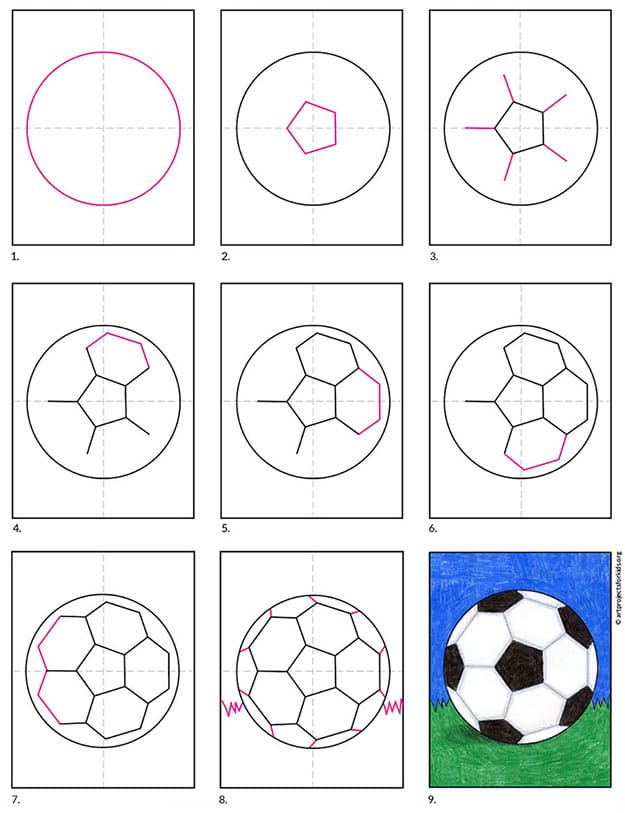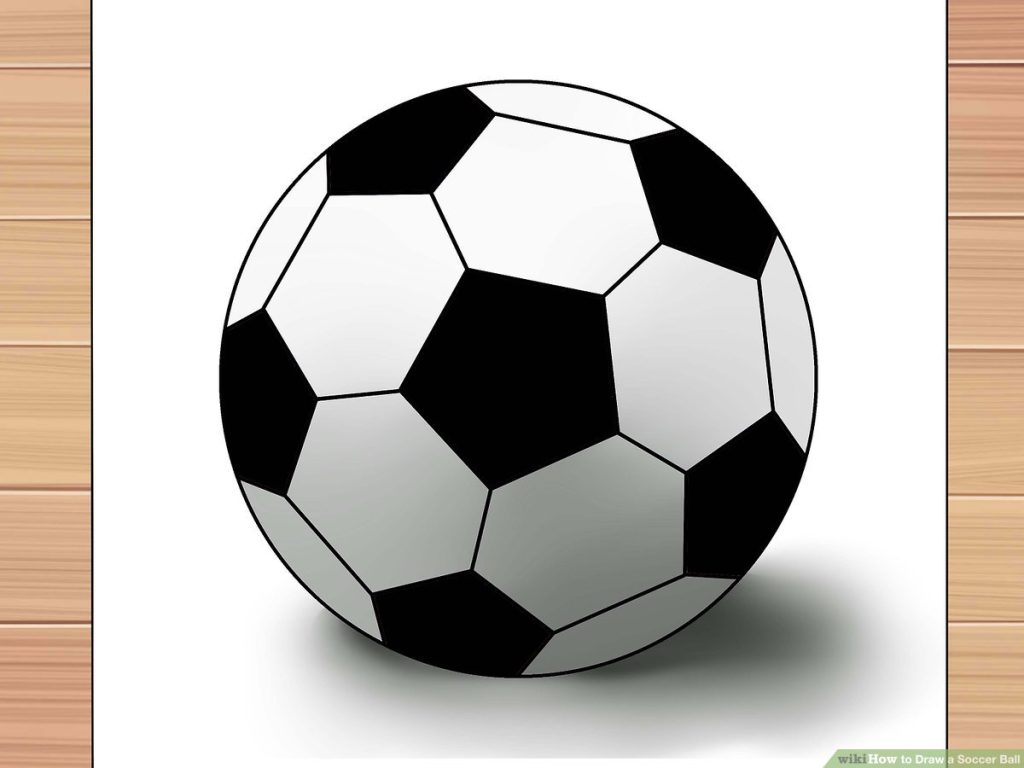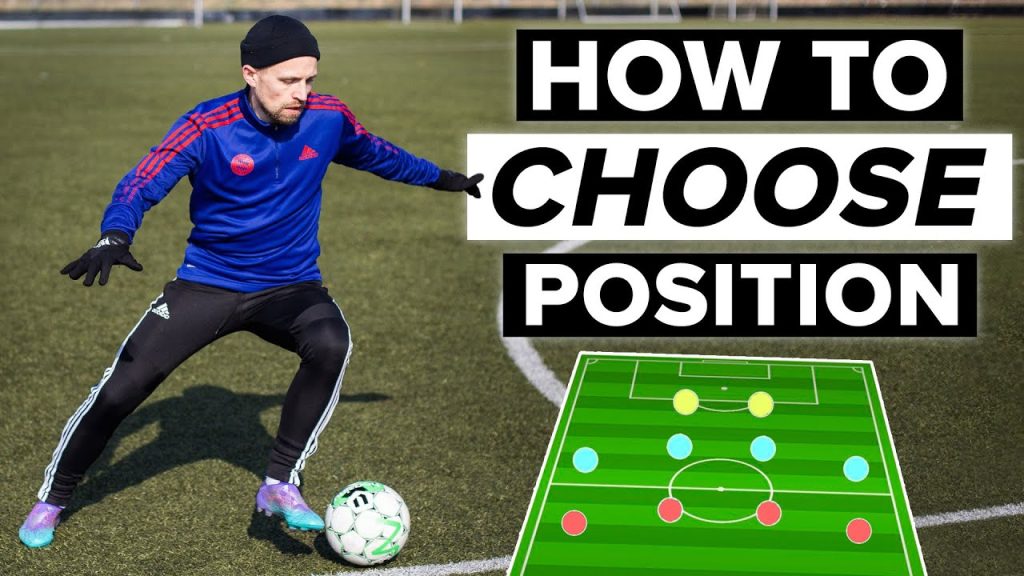Drawing a soccer ball might seem tricky at first. But with some guidance, it becomes easy and fun.
In this blog, you’ll learn step-by-step how to draw a soccer ball. A soccer ball’s design is unique and recognizable. It is made up of hexagons and pentagons. Understanding this pattern helps in drawing it accurately. You don’t need to be an artist to get it right.
With a bit of patience and practice, anyone can draw a soccer ball. This guide will break down the process into simple steps. Whether you’re a beginner or just want to improve your skills, this tutorial is for you. Let’s get started and make drawing a soccer ball a fun and easy task!

Credit: www.youtube.com
Materials Needed
Creating a realistic soccer ball drawing is easier with the right materials. Having the right tools ensures your drawing looks professional and accurate. Let’s dive into the materials needed.
Drawing Tools
First, gather essential drawing tools. A good quality pencil is a must. It helps in sketching and shading. An eraser is also crucial. Mistakes are part of the process, and an eraser will help you fix them. Use a ruler for straight lines. This is important for drawing the hexagons and pentagons on the soccer ball. Lastly, have some paper. Preferably, use thicker paper that can handle erasing and shading.
Reference Images
Reference images are very useful. They guide you on the soccer ball’s shape and pattern. Look for clear and detailed pictures. You can find many online. Print them out or keep them on a screen nearby. This way, you can refer to them while drawing. It will help you get the details right.
Basic Shape
Drawing a soccer ball can seem tricky at first, but it is simple if you break it into steps. The first step is to understand the basic shape. The basic shape of a soccer ball starts with a circle. This section will guide you through creating the base of your soccer ball drawing.
Drawing The Circle
Start with a blank sheet of paper and a pencil. Draw a circle in the center. The circle does not need to be perfect, but it should be as round as possible. To help, you can use a round object like a cup or a lid to trace. This will give you a smooth and even circle.
Here is a simple method to draw a circle:
- Place a round object on the paper.
- Hold the object steady with one hand.
- Trace around the edge with your pencil.
Now, you have the basic shape of the soccer ball. This circle will be the foundation of your drawing.
Perfecting The Outline
Once you have your circle, the next step is to refine it. Use your eraser to clean up any uneven lines. Make sure the outline is smooth and clear. A clean outline will make the next steps easier.
Here are some tips for perfecting the outline:
- Erase any wobbly or jagged lines.
- Redraw the circle if needed to make it smoother.
- Ensure the circle is well-defined.
With a perfect outline, your soccer ball will look more realistic. Take your time with this step. A good foundation is key to a great drawing.
Now that you have the basic shape ready, you can start adding the soccer ball’s unique patterns. But first, make sure your circle is just right. It will make everything else easier.
Hexagons And Pentagons
Drawing a soccer ball can seem complex due to its unique pattern. The pattern mainly consists of hexagons and pentagons. Understanding these shapes makes the process easier. Let’s break it down.
Starting With A Hexagon
Begin by drawing a hexagon. A hexagon has six equal sides.
- Draw a circle to guide the size.
- Mark six evenly spaced points on the circle.
- Connect the points to form a hexagon.
Adding Pentagons
Next, add the pentagons around the hexagon. A pentagon has five sides.
- Draw a small circle at each corner of the hexagon.
- Mark five points on each small circle.
- Connect these points to form pentagons.
Repeat these steps to cover the ball. Use hexagons and pentagons to fill gaps.
| Shape | Sides |
|---|---|
| Hexagon | Six |
| Pentagon | Five |
Remember, the key is to maintain symmetry. This ensures the soccer ball looks realistic.
Pattern Layout
Drawing a soccer ball can seem tricky, but it’s all about the pattern layout. The classic soccer ball pattern consists of black pentagons and white hexagons. Properly positioning these shapes and maintaining symmetry is key.
Positioning Shapes
Begin by drawing a circle. This will be the outline of your soccer ball. Inside the circle, draw a hexagon in the center. This hexagon will serve as your starting point.
Next, draw five pentagons around this central hexagon. Ensure these pentagons touch the sides of the hexagon. The pentagons should be evenly spaced. This ensures a balanced look.
Fill the gaps between the pentagons with hexagons. Continue this pattern until you fill the entire circle. Keep the shapes uniform. This maintains the soccer ball’s iconic look.
Maintaining Symmetry
Symmetry is crucial for a realistic soccer ball. Each pentagon should be the same size. The same goes for the hexagons.
One trick to maintain symmetry is using a ruler or a compass. These tools help keep your shapes even. Another tip is to draw lightly at first. This allows you to correct mistakes easily.
Here’s a quick table summarizing the pattern:
| Shape | Number of Sides | Color |
|---|---|---|
| Hexagon | 6 | White |
| Pentagon | 5 | Black |
By following this pattern layout, you will create a realistic soccer ball. Practice makes perfect. Keep drawing and refining your technique.
Shading Techniques
Drawing a soccer ball can be fun and rewarding. One of the key steps in making your soccer ball look realistic is to understand shading techniques. By adding shadows and highlights, you create a sense of depth and three-dimensionality. This section will guide you through two important aspects: Light and Shadow and Creating Depth.
Light And Shadow
Understanding light and shadow is crucial for realistic shading. Start by deciding where your light source is. This will determine where the highlights and shadows fall on the ball.
- Highlights: These are the brightest spots on the ball where the light hits directly. Use a light touch with your pencil to create these.
- Shadows: These areas are darker as they are away from the light source. Apply more pressure with your pencil to create these.
To illustrate, imagine the light source is from the top left. The top left side of the ball will have highlights, while the bottom right will have shadows.
Creating Depth
Creating depth involves using different shades of grey to show the roundness of the soccer ball. Here’s how:
- Midtones: These are the areas between the highlights and shadows. Use medium pressure with your pencil.
- Gradient: Blend the transitions smoothly between highlights, midtones, and shadows.
| Shading Element | Description |
|---|---|
| Highlights | Brightest spots where light hits directly. |
| Shadows | Darker areas away from the light source. |
| Midtones | Areas between highlights and shadows. |
Using these techniques, your soccer ball will look more lifelike. Remember, practice makes perfect, so keep experimenting with light and shadow to improve your drawing skills.

Credit: www.youtube.com
Adding Details
Once you have the basic shape of your soccer ball, it’s time to add details. This step brings your drawing to life, making it look more realistic. Let’s dive into the specifics of enhancing edges and adding final touches.
Enhancing Edges
To make your soccer ball look three-dimensional, start by enhancing the edges. Here are some steps:
- Darken the lines where the panels meet. This gives a sense of depth.
- Use a softer pencil or shading technique to add shadows. Focus on the edges of the black pentagons.
- Blend the shadows gently. This creates a smooth transition between light and dark areas.
Avoid using too much pressure. Light strokes work best for realistic shading. Check the edges for uniformity. All lines should connect smoothly.
Final Touches
The final touches make your soccer ball pop. Follow these steps:
- Add highlights on the curved surfaces. This gives the ball a shiny appearance.
- Draw small lines to represent stitching if desired. Keep them subtle.
- Check for any uneven lines or shading. Make adjustments as needed.
- Consider the light source. Adjust shadows and highlights accordingly.
Take a step back and look at your drawing from a distance. This helps you spot areas needing improvement. Remember, the goal is to create a realistic soccer ball.
Enhancing edges and adding final touches are crucial steps in your drawing process. With patience and practice, your soccer ball will look amazing!
Common Mistakes
Drawing a soccer ball can be tricky. Many people make common mistakes. Let’s explore some of these mistakes to help you create a perfect soccer ball drawing.
Shape Irregularities
The shape of the soccer ball is crucial. It should be a perfect circle. Many beginners end up with an oval or uneven shape.
Here are some tips to avoid shape irregularities:
- Use a compass to draw a perfect circle.
- Double-check your outline before adding details.
- Practice drawing circles freehand to improve your skills.
Shading Errors
Shading gives the soccer ball a three-dimensional look. Incorrect shading can make it appear flat.
Follow these steps to get the shading right:
- Identify the light source. Decide where the light is coming from.
- Shade the opposite side of the light source darker.
- Use lighter shades near the light source.
Remember, gentle transitions between shades make the drawing realistic.
| Common Mistake | Solution |
|---|---|
| Oval shape | Use a compass |
| Flat appearance | Proper shading |
By avoiding these mistakes, you can improve your soccer ball drawing. Practice regularly and pay attention to details.
Practice Tips
Drawing a soccer ball can be tricky. With practice, it becomes easier. Here are some tips to help you improve your skills.
Consistent Practice
Set aside time each day to draw. Even 10 minutes can help. Consistent practice builds muscle memory. With time, your lines will become smoother. Your circles will look more even.
Keep your drawings. Compare your first attempt with later ones. You will see progress. This will keep you motivated. Notice the small improvements. Celebrate them.
Exploring Variations
Try drawing soccer balls from different angles. Front view, side view, or top-down. Each angle offers a new challenge. It helps you understand the ball’s shape better. Experiment with different sizes. Small sketches or large ones. Each size requires different techniques.
Use different tools. Pencils, pens, or even digital tablets. Each tool provides a unique feel. This will help you find your favorite. Practice with different shading techniques. Light and dark areas create depth. They make your drawing look more realistic.

Credit: artprojectsforkids.org
Frequently Asked Questions
How Do You Start Drawing A Soccer Ball?
Start by drawing a circle as the outline of the soccer ball. Then, sketch the pentagon and hexagon patterns inside the circle.
What Tools Do I Need To Draw A Soccer Ball?
You need a pencil, eraser, ruler, and a piece of paper. For coloring, use markers or colored pencils.
How To Draw The Pentagon Shapes?
Draw a small pentagon in the center of the circle. Then, draw connecting pentagons around it.
Can Beginners Draw A Soccer Ball Easily?
Yes, beginners can draw a soccer ball by following simple step-by-step instructions. Practice will make it easier.
Conclusion
Drawing a soccer ball can be fun and easy. Follow the steps outlined, and practice regularly. Start with basic shapes, then add details. You’ll improve with time and patience. Remember, consistency is key. Share your artwork with friends and family.
Enjoy the process and keep creating. Happy drawing!


